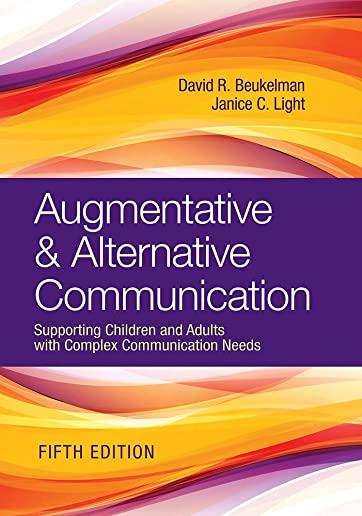
Beukelman, David R.
product information
description
ve and alternative communication, this classic bestseller is now in its fifth edition--revised and updated for a new generation of SLPs, teachers, occupational therapists, and other professionals in clinical and educational settings. Partnering with a team of distinguished contributors, renowned experts David Beukelman and Janice Light deliver today's most comprehensive, up-to-date introduction to AAC interventions and technologies for children and adults with complex communication needs. Future service providers will get in-depth coverage of essential AAC topics, enhanced by helpful study questions, valuable perspectives from people who use AAC, and case examples that illustrate key principles. Significantly expanded with new chapters on critical topics, more practical information on how AAC systems work, and new online companion materials, this definitive text will expertly prepare readers to support communicative competence-and quality of life-for children and adults with complex communication needs. WHATâ (TM)S NEW
Professionals will prepare for their work in the field with critical new information on:
PLUS: Enhance your teaching with a package of online companion materials, including a resource guide to help practitioners and students learn more about AAC; sample responses to chapter study questions; and a sample syllabus. TOPICS COVERED: components and phases of AAC assessment * planning, implementation, and evaluation of AAC interventions * working with families *vocabulary and message selection *multimodal communication*unaided representations * aided AAC symbols and other representations * assistive technologies that support literacy * support for beginning communicators * education * employment * assisted and independent living * health care * selection and personalization of AAC systems * AAC access techniques and output * interventions for people with developmental disabilities * interventions for people with acquired disabilities * the importance of advocacy Learn more about the new edition!
Professionals will prepare for their work in the field with critical new information on:
- Collaborating with family members and other communication partners
- Making the most of mobile technologies and AAC apps
- Selecting an AAC system and tailoring it to individual needs
- Working effectively with families from diverse cultural backgrounds
- Supporting inclusion across the lifespan (including education, employment, and community life)
- Ensuring efficient patient-provider communication in medical settings
- Providing communication supports to people with autism spectrum disorder
PLUS: Enhance your teaching with a package of online companion materials, including a resource guide to help practitioners and students learn more about AAC; sample responses to chapter study questions; and a sample syllabus. TOPICS COVERED: components and phases of AAC assessment * planning, implementation, and evaluation of AAC interventions * working with families *vocabulary and message selection *multimodal communication*unaided representations * aided AAC symbols and other representations * assistive technologies that support literacy * support for beginning communicators * education * employment * assisted and independent living * health care * selection and personalization of AAC systems * AAC access techniques and output * interventions for people with developmental disabilities * interventions for people with acquired disabilities * the importance of advocacy Learn more about the new edition!
member goods
No member items were found under this heading.
Return Policy
All sales are final
Shipping
No special shipping considerations available.
Shipping fees determined at checkout.







